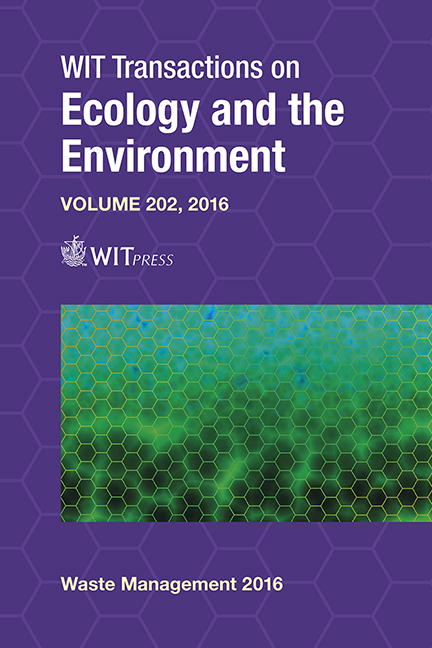Recycled Construction And Demolition Waste In Mining Rehabilitation
Price
Free (open access)
Transaction
Volume
202
Pages
10
Page Range
27 - 36
Published
2016
Size
482 kb
Paper DOI
10.2495/WM160031
Copyright
WIT Press
Author(s)
F. J. Fernández-Naranjo, E. Alberruche, V. Rodríguez, J. C. Arranz, L. Vadillo
Abstract
Currently, the main destination for non-valuable recycled construction and demolition waste (CDW) consists of its disposal in landfills. Because of the high volume of non-valuable recycled CDW generated, and due to the disposal it is usually developed in low-controlled or even non-controlled conditions, this kind of management may derive in safety and environmental issues. Therefore, it is necessary to find an alternative management system that allows, firstly, the recovery of this kind of waste and, secondly, enables the rehabilitation of areas affected by mining activities.
The Geological Survey of Spain (IGME) is carrying out a management commission for the Ministry of Agriculture, Food and Environment which aims to produce a methodological guideline for the rehabilitation of mining pits and quarries with non-valuable recycled CDW in open-pit facilities.
The main target is the implementation of the basic legislation applicable on this matter (Royal Decree 1481/2001; Royal Decree 105/2008; Royal Decree 975/2009; Law 22/2011), with the ultimate objective of reaching a framework that allows the mining rehabilitation with non-valuable recycled CDW in safety and healthy conditions for population and environment.
The abovementioned guideline will be based on the physicochemical characterization of waste, the environmental constraints, and the rehabilitation objectives.
Keywords
recycled aggregates, CDW, mining, mining areas, inert waste, concrete, ceramics, environmental rehabilitation, waste management, leachability





